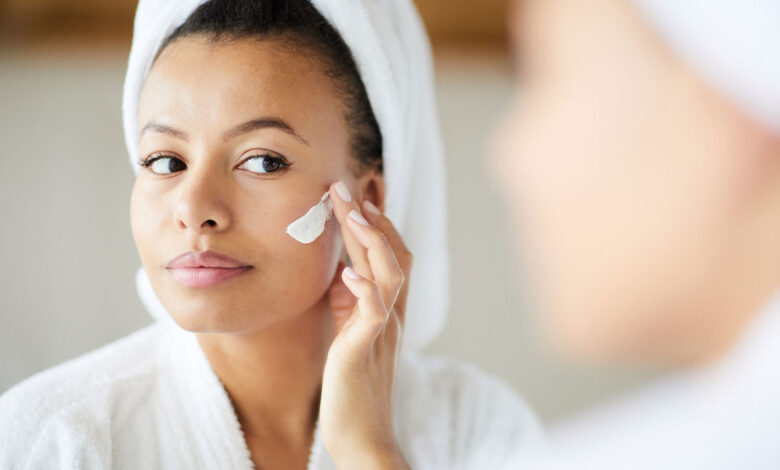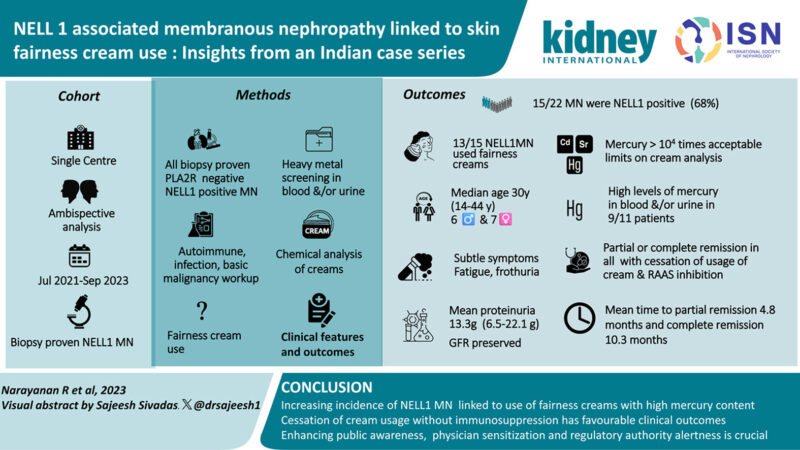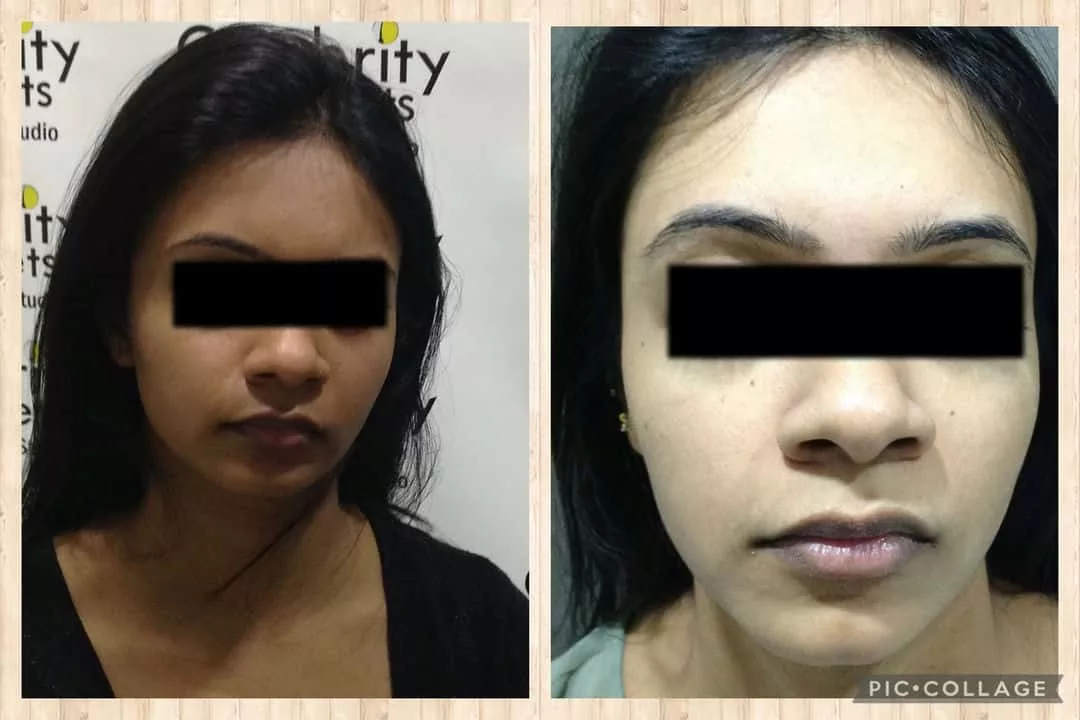Embracing Fairness And Beauty At The Cost Of Kidney Damage: From Using Products That Are High In Mercury To Recent Growing Use Of Glutathione, How We Are Still Enslaved In The Prejudices Of The Past!

Fairness creams are incredibly popular products that are frequently used to brighten the complexion, particularly among women. Fair complexion, white skin, radiant glow-all of these strategies and phrases are utilised by fairness cream firms to capitalise on societal stereotypes and people’s fear. However, using these fairness creams has other unwanted effects besides bodily unease.
Although they appear to be harmless face creams, a recent study has uncovered their shocking effects on the human body. According to the study’s findings published in the journal Kidney International, the high levels of mercury in these creams can have catastrophic consequences for your kidneys. Mercury is a popular element in skin-lightening soaps and lotions; mercury salts cause melanin synthesis, resulting in a lighter skin tone.

According to the study, the increased usage of fairness creams containing high levels of mercury is increasing the incidence of Membranous Nephropathy (MN), a disorder that damages kidney filters and causes protein leakage. MN is a form of autoimmune disease that produces nephrotic syndrome, a kidney disorder in which the body removes an excessive amount of protein in the urine. The kidneys filter the protein, but it should remain in the body. If the kidneys release protein into the urine, they are not functioning properly.
What does the study say?
The study analysed 22 cases of MN reported in the period of July 2021 and September 2023. According to a report, the patients were screened at the Aster MIMS Hospital, and symptoms were often subtle, with fatigue, mild edema, and increased frothing of urine. Only three patients had gross edema, but all had exaggerated protein levels in their urine. One patient developed cerebral vein thrombosis, which is a blood clot in the brain, but kidney function was preserved in all, as the report mentions.
The findings displayed that about 68 % or 15/22 were positive for neural epidermal growth factor-like one protein (NELL-1), which is a rare form of MN that is more likely to be connected with malignancy. Of the 15 patients, 13 accepted using skin fairness creams before their symptoms started. Of the rest, one had a past of use of traditional indigenous medicines, while the other had no identifiable trigger.
Mercury is absorbed through the skin and wreaks havoc on kidney filters, resulting in an increase in nephrotic syndrome cases,” said Dr Sajeesh Sivadas of the Department of Nephrology at Aster MIMS Hospital in Kottakkal, Kerala, in a post on X. These creams, readily available in India’s unregulated markets, provide speedy effects, but at what cost? Users frequently describe a worrisome addiction, and quitting use results in much darker skin, he added. The majority of instances were resolved after discontinuing the usage of the activating creams.
Moreover, these fairness creams are not just a human problem; they are an ecosystem problem.
Skin-lightening products represent a risk not just to the user but also to children through breastmilk, and food chains can get polluted when cosmetics are washed off into wastewater. Furthermore, the compound can travel far from its source of distribution, accumulating in the ground, water, and soil without degrading the environment. With demand for skin-lightening products expected to reach $ 11.8 billion by 2026, driven by a increasing middle-class in Asia-Pacific and shifting demographics in Africa and the Caribbean, the use of hazardous substances in skin-lightening products is a global concern.
It’s not just a fairness issue but a terrible public hazard!
These fairness creams pose a possible public health risk, and it is critical to raise public knowledge about the dangers of using such items and notify health authorities to combat this threat. This is more than simply a skincare/kidney health issue; it is a public health emergency. If mercury is applied to the skin, it can cause harm, so consider the consequences if swallowed. It is essential to take prompt action to control these dangerous items and protect public health.

Given society’s obsession with fair complexions, this could foreshadow a widespread problem, possibly of epidemic proportions. According to studies conducted in Asia and Africa, this practice extends beyond India and has worldwide public health implications. Subtle clinical symptoms upon presentation, combined with physicians’ lack of understanding of the link between fairness creams and nephrotic syndrome, as well as failure to get a positive history of the latter, may explain why this condition has not been recognised on a broader scale.
To reduce further use, it is critical to educate the general public and physicians about the health risks posed by contaminated skin creams, as well as notify regulatory authorities to limit their availability. However, shifting society’s attitudes towards natural skin tones would be a harder issue.
This is not the first time such a broader issue has come to light. Earlier data showed how fairness creams have made prey to kidney diseases in the past as well.
An article from mid-day.com published in February 2024 stated that two separate fairness creams—one obtained from a local barbershop and the other from a market with a ‘made in Malaysia’ label—caused kidney disease in two people from Raigad. Another comparable case was discovered early in 2023 at Parel’s KEM Hospital. The Borivli Salon & Beauty Parlour Welfare Association has expressed similar concerns to the local police and the Food and Drug Administration.

Even a dozen years ago, in 2012, The Economic Times reported about a World Health Organisation report that stated mercury-containing fairness creams can damage the kidneys.
In 2022, WION reported that the Zero Mercury Working Group (ZMWG) discovered that over a hundred skin whitening products it tested contained significant levels of mercury. The article, which appeared in media sites such as The Guardian and CNN, raised concerns about the safety of various skin whitening solutions. According to media sources, such infected products are sold all over the world on e-commerce sites including eBay, Amazon, and Alibaba.
According to the studies, ZMWG analysed 271 products purchased in more than 15 countries over the course of 13 months. After testing, the data was examined and compared to the standard.
When something goes beyond the level, the government need to intervene—similar efforts by the government.
The governments of Jamaica, Gabon and Sri Lanka have joined forces to combat harmful cosmetic practices, initiating a joint US$14-million project to eradicate the use of mercury in skin-lightening products. The Eliminating mercury skin lightening products project, Led by the UNEP (UN Environment Programme), with funding from the GEF (Global Environment Facility), and executed by the WHO (World Health Organization) and Biodiversity Research Institute (BRI), will work to mitigate the risk of exposure to mercury added in skin lightening products by raising awareness of the health risks related to their use, developing model regulations to reduce their circulation, and stopping production, trade and distribution across domestic and international markets.
At capitalistic levels, while governments have agreed to limits on mercury usage under the Minamata Convention, corporations continue to manufacture, trade, and sell harmful items to consumers. Also, at a lesser level, home-based cream makers (barbers or salons that sell the creams) frequently use mercury in the cream, unknowing of its harmful effects on the body.
Recognising the growing sensitivity to the usage of the phrase ‘fair’, cream manufacturers have cleverly avoided public criticism by using a more inclusive and euphemistic term—’glow’. The most common example of this is the famous king of fairness cream in the Indian market, ‘Fair and Lovely’, which changed its name to ‘Glow and Lovely’.
In 2018, the TISS (Tata Institute of Social Sciences) conducted a study on the preferences of 1,238 women and 746 men for the use of fairness creams. The statistics found that 59.6 %of women and 46.1% of men admitted to using fair cosmetics at various stages of their lives. In response to the question regarding their objectives, 31.2% stated that they wanted to improve their aesthetic appeal by seeming ‘beautiful‘, while 36.2% claimed that having a fairer complexion would help them feel more ‘culturally accepted’.
So now, you may be convinced that stopping the use of mercury in lightening creams or using stringent regulations in the proportions of using mercury may have solved the problem? However, the game is not yet over! The market has derived another methods to join in the race of melanin reduction, and hence this marks the onset of another tool, glutathione in the era of fair complexions.
The profound desire to be accepted in the cultural context has persuaded hundreds, if not thousands, to take advantage of skin-lightening therapies such as glutathione. So, what exactly is glutathione? Known as a super drug, glutathione is a powerful antioxidant that is naturally synthesised within our cellular structure. It comes from the liver and contains three important amino acids: cysteine, glutamine, and glycine. It is involved in multiple physiological activities, including tissue regeneration, immune system modulation, and general body restoration. However, there is an increasing trend of taking glutathione for cosmetic purposes, particularly for skin whitening and anti-ageing benefits.
However, problems exist here. Cosmetic dermatologist Dr Chytra V. Anand, who practices in Bengaluru, highlights the absence of oversight in the cosmetics industry in contrast to the pharmaceutical industry, which can lead to contamination and mislabelling. Products with hazardous chemicals or those that don’t contain the recommended level of glutathione are potential problems. Unsupervised use can have negative effects such as kidney damage, allergic reactions, or potentially harmful interactions with other drugs, especially when high-dose IV glutathione is used. Concerns about unqualified people doing the treatment are also present, underscoring the fact that IV infusions are medical procedures that need to be supervised.
How this new-age social media is also responsible for such hazardous events?
It is to be further blamed on social media influencers and entertainers for “championing” these creams and propagating their use in a multibillion-dollar market. Concerns arise in the arena of uncontrolled and inadequately educated Instagram influencers who largely endorse false beauty products, claiming ‘skin-whitening’ benefits without supporting evidence. Dr Anand recounts how she once engaged with two renowned beauty salons in Delhi, each of which had large Instagram followings of 479k and 3.5M.

What both Instagram profiles have in common is the promotion of specially curated ‘magic facials’ that falsely claim skin-whitening powers. When asked about the components in these packages, the owners declined to reveal them, claiming that no dermatologists were involved in the product formulation. The before and after alterations on their Instagram sites not only mislead users but also help to the continuation of deeply ingrained colourist attitudes.
Dr. Chytra underlines that methods such as IV glutathione serve as a supportive, antioxidant therapy that reduces the effects of radical damage and that the treatment is not designed to lighten the skin. While glutathione can be used to improve skin tone and minimise hyperpigmentation, self-administered glutathione for skin lightening is a societal issue rather than a beauty one.
The bottom line.
There are numerous examples around us that highlight India’s current obsession with its fair complexion and its impact on the country’s collective mentality. Despite the global shift towards recognising diversity and supporting individual identities, the marketing of fairness creams, lotions, and treatments that promise a lighter complexion continues to thrive, relying on age-old societal preferences and biases.
In October 2023, Ananth Narayanan, the founder of Mensa Brands and former CEO of Myntra, revealed that Indian buyers are more likely to click on products with white-skinned models. Narayanan revealed this intriguing perspective on an edition of Nikhil Kamath’s podcast, ‘WTF is with Nikhil Kamath,’ which focused on the mechanics of establishing a fashion, beauty, or home brand.
After all, the question is for us to ask ourselves: is it truly about skin colour, or are we associating with the pseudo-scientific concept of social Darwinism, which incorrectly relates traits like skin colour, bone structure, and facial features to intelligence, attractiveness, and so on? Even if the governments and collective societies are taking time, you take the initiative to ditch these so-called anti-ageing, skin-lightening, skin-brightening creams and focus on embracing the person who is! Take the call before it’s too late.




